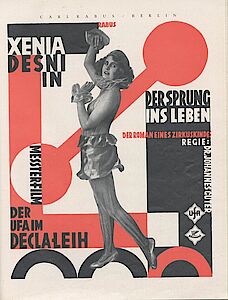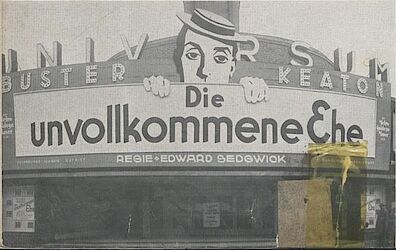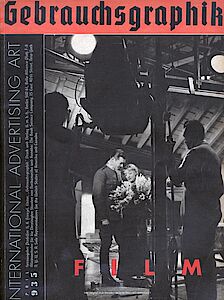Film adverts and film as an advertising Medium
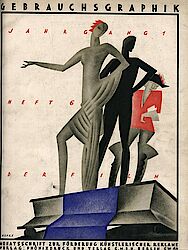
In 1924, in the very first issue of Gebrauchsgraphik, Walter Reimann wrote a programmatic introduction to »advertising film«. There he emphasised »the wonderful promotional capability of film which through clever, pictorial demonstration is able to make evidence visible and therefore plausible« (p. 91). Reimann followed up this prelude with a regular series of articles in which he reflected critically on developments in film from an advertising point of view. The high status Gebrauchsgraphik afforded to film is seen in the fact that it was chosen as one of the very first focal themes (GG 06.1924): an entire issue in the first volume was dedicated to questions connected with the big screen. The contents of that issue give an indication of the diversity in the film-related work samples that were already being submitted to the magazine: it was about film posters (36 film posters reproduced in high-quality, but only monochrome in rotogravure) and the first advertising trailers used in cinemas. Even the cover makes it clear that the editors were aiming high: because it was designed by commercial artist Otto Arpke [fig. 01] of Berlin, who was also responsible for designing the opulent luxury issues of the trade magazine Die Lichtbildbühne.
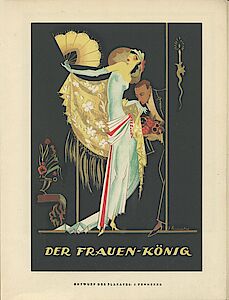
Seven lithographed plates illustrate the level of sophistication achieved in poster advertising for film in the mid 1920s: Because new promotional material had to be created for each of the many new films being launched, the distributors were at that time major clients for the advertising sector. In the special issue this aspect is represented by reduced-size posters from the studios of Theo Matejko, Paul Scheurich,Josef Fenneker and others [fig. 02]. Noticeably different in design are the ads by Carl Rabus who experimented with constructivist components [fig. 03], even before Jan Tschichold began producing his famous film posters for the Phoebus-Palast cinema in Munich.

What does surprise, however, is that in neither this nor a later issue, does film photography feature as an important advertising medium. Certainly the magazine was anything but disinclined towards photography as atheme (see novum 07.14), but the job of a set photographer received little recognition, it being generally regarded in the profession as having little scope for design, as the action on the screen dictated the motifs. Ultimately photo posters continued to be an absolute exception through into the war years. Despite the evident close connection between the two techniques, film advertising was for a long time the domain of artistic illustration, in Germany and abroad [fig. 04 & 05]. The common practice of decorating the facades of cinemas for each different film, is documented in the Gebrauchsgraphik article on outdoor advertising by Rudi Feld (GG 03.1931) [fig. 06 & 07].
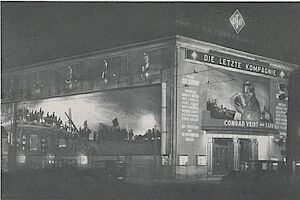
At the same time a good deal of space was devoted, from as early as 1924, to film as an advertising carrier for other products. It had long been accepted as a truism that many benefits of products and how to handle them could much better be presented through the dynamic medium of film than on a static poster. Animated film in particular was seen as well suited for advertising purposes; the special effects that were being developed in this very early stage were a simple and cost-effective way of bringing attention-grabbing content to the screen. Later Gebrauchsgraphik was to celebrate the German animation pioneer Hans Fischerkoesen as »a genius creator of optical and acoustic effects« [fig. 08].

Not surprisingly, the second special issue on the subject of film was dedicated to a major development in the medium, namely the advent of the talkies. What was surprising, however, was that this issue only came in 1935, more than five years after the technology had conquered screens around the world. The cover of this issue shows a typical scene from a talkies movie set [fig. 09], the main articles are about the latest film posters by Josef Fenneker and others. Finally, with a passing nod to Moholy-Nagy’s experiments of the 1920s, a »film design« in the form of a »picture manuscript« is presented, that is supposed to breath life into »inanimate objects« such as lattice-framed structures.
The last great leap forward in the development of cinema – namely the spread of commercially usable colour film technology, which in Germany, other than in the U.S., was during the war years – could of course barely be represented in Gebrauchsgraphik. The ramifications of a war economy, which caused the issues to become ever thinner and which finally in 1944 led to publication halting entirely, also prevented a more intensive involvement with colour film.
